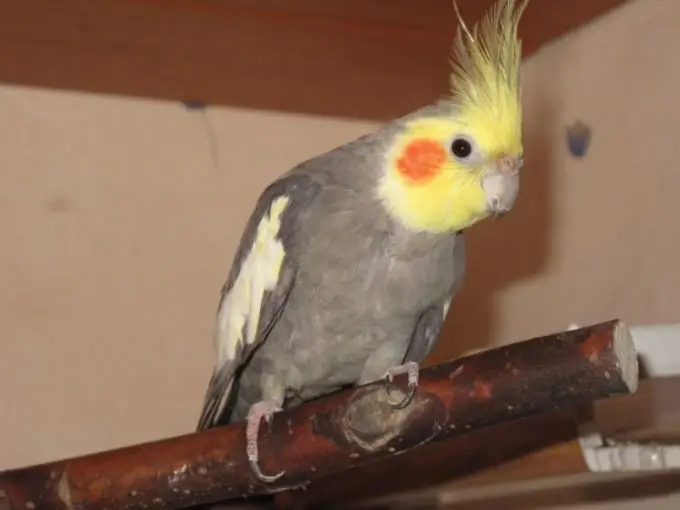- Author Delia Mathews [email protected].
- Public 2023-12-16 00:05.
- Last modified 2025-01-22 15:45.
In 9 cases out of 10, the cause of the parrot's illness is the careless attitude of the owners: poor-quality feed, insufficient lighting, lack of vitamins in the daily diet of the bird, poor cleaning of the cage and the room as a whole. All this reduces the immunity of the parrot and makes it susceptible to many diseases.

Instructions
Step 1
All diseases of parrots can be divided into several groups. The first group is nutritional diseases. Their reasons are feeding only with grain feed or, on the contrary, mainly with vegetables and fruits, overfeeding with grains of one of the types, and the lack of access for the bird to mineral supplements. Such diseases can be identified by the following signs: the parrot does not move much, is not interested in swings, toys, bells, liquid droppings, apathetic sitting on a perch on two legs, complete or partial refusal of food.
Step 2
The second group of diseases includes parasitic diseases. An accurate diagnosis can only be made in a laboratory setting. To do this, you must show the bird to an ornithologist veterinarian. Most likely, he will ask to bring bird droppings and dropped feathers to the laboratory for analysis. Parasitic diseases are manifested as the unreasonable plucking of their feathers by a parrot, the appearance of growths on the beak, wax and legs (usually white, gray or brown), the loss of broken feathers. On feathers that have fallen out or plucked out by a bird, you can sometimes notice something that looks like dirt on the dense part of the feather (at the base), holes on the feather axis, "stitching" on the feather itself.
Step 3
The third group is infectious diseases. They are quite rare: the majority of human viruses are not scary to a parrot, and if properly maintained, there is simply no place to “pick up” bird viruses. Infectious diseases manifest themselves as lacrimation, secretion of their beak and wax, liquid yellow or bright green droppings, apathy. Quite often, the parrot refuses food, but begins to drink much more water than before.
Step 4
The fourth group usually includes various injuries: bruises, cuts, fractures and other mechanical injuries. Symptoms of trauma can often be seen: the parrot trembles, unnaturally bends one of its legs, folds its wings incorrectly or keeps them down, blood or mucus is visible on the feathers, it is difficult for the bird to hold its head, the body falls on its side, the parrot cannot stay on the perch and sits on the bottom cells.
Step 5
The fifth group includes diseases of the internal organs. It is impossible to determine them with the naked eye. Even an ornithologist is not always able to accurately diagnose. One of the most common diseases in this category is liver disease. They arise when poultry has an abundance of feed with a high content of fat, for example, sunflower seeds. Internal organs also suffer if the bird is even occasionally allowed to feast on "human" food: pasta, chocolate, fresh white bread, sausage, and so on.






